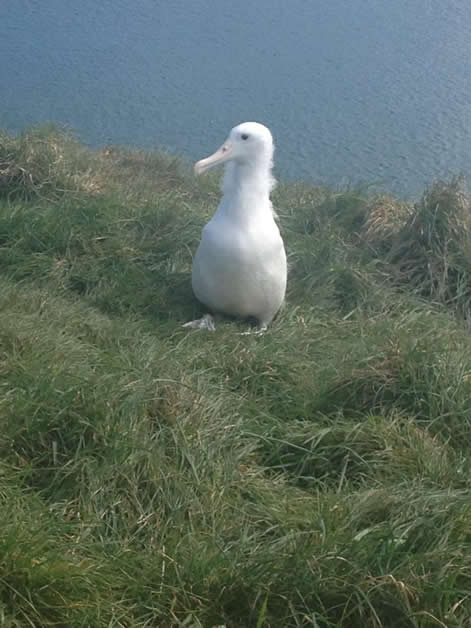On 20 September, members of Te Rūnanga o Ōtākou had an opportunity to walk around the wildlife reserve at Pukekura (Taiaroa Head), hosted by the Department of Conservation.
Access to the reserve is very restricted because it is the only mainland breeding ground for northern royal albatross. We quickly snapped up the opportunity as the ground is a predominant feature of Ōtākou history. A number of other stakeholders were invited as well, which was fantastic for all tamariki and pakeke. Port Otago representatives brought the key to the lighthouse with them. The Taiaroa Head Lighthouse was built in 1864 and is one of only four stone lighthouses in New Zealand.
All groups were lucky to see an albatross chick at close quarters. At this time of year, the chicks are around eight months old and are preparing to fledge. They will spend up to eight years living out in the Southern Ocean before returning to Pukekura to find a mate and breed.
It’s hard to judge in the photo but chicks at this age are approaching hip height on an average-sized adult. As it was a windy day, there were plenty of chicks jumping around but unfortunately we didn’t see any fledge. The first time a chick gets into the air, they’re straight out to sea for those eight years – no mucking about practising beforehand.
Walking past an exposed midden was a good reminder of our Pukekura history. At Ōtākou we’ve grown up listening to stories of Tarewai, Te Wera, Taoka, Kapo, and others who spent time at Pukekura but the midden is a tangible reminder that our tūpuna lived everyday lives on the headland. We were looking at the remains of everyday meals they had once eaten.
The walk concluded with a trip underground through Fort Taiaroa and the Armstrong Disappearing Gun. The tunnels and armaments were installed in the 1880s as a response to the Russian military scare of the time and were used intermittently through to World War II. It is quite incredible that a relatively small piece of land at the end of the Otago Peninsula has such a remarkable history and that so much of it is still evident.

Northern royal albatross chick.